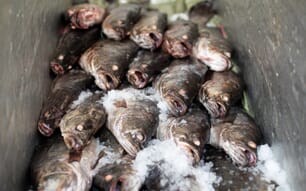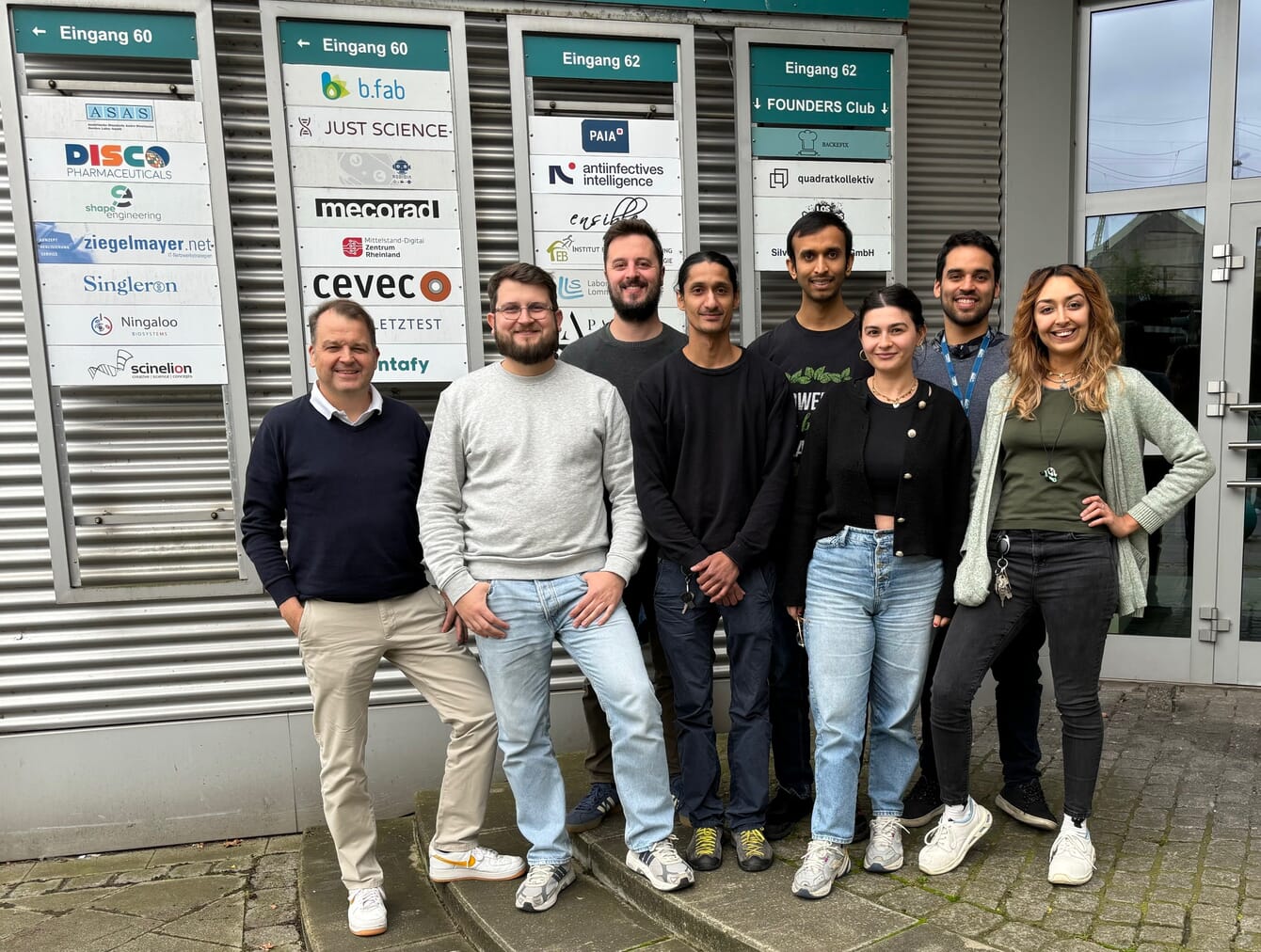
Founder, Frank Kensy, is on the left © b.fab
That is the vision of *b.fab founder, Frank Kensy, who has made several breakthroughs which suggest that the mainstream CO2-to-protein process – as championed by fellow startups such as Deep Branch (now AerBio) or Novo Nutrients – is harder to implement due to explosion risks.
A biochemical engineer, with nearly 25 years of experience in the biotech sector, Kensy had his eureka moment while doing a PhD in microbioreactors.
“Standard bioreactors are very laborious and cumbersome, so I looked to find an easier solution,” he explains.
He made sufficient progress to set up his own company, selling devices to monitor and accelerate the bioprocess development in microbioreactors (BioLector technology), this gave him valuable insights into a wide range of applications in the biotech space and, after selling his original startup, Kensy decided to devote his energy to setting up a new company involved in CO2 utilisation.
“We found a technology in Israel that converts CO2: in the first step by electrochemistry, bringing CO2 and electricity together in an electrolyser, to produce formic acid. This is the main feedstock for our bioprocess, in which bacteria convert this formic acid into protein,” he explains.
“It’s quite simple – you need a CO2 source together with a source of renewable electricity and that´s all to produce the formate. The produced formate is then fed into a bioreactor and let the bacterial cells grow on the formate. Finally, we generate a high cell density which is then spun in a centrifuge and in a last step, the biomass is dried in a spray drier to get the single cell protein,” he adds.
While the end product is not particularly unique, the process has two significant advantages over conventional processes.
“We produce the protein using just CO2 and electricity. The main difference is that we have a proprietary pathway which is more efficient than the standard ones and our feedstock for the fermentation is a liquid,” Kensy emphasises.
“This makes the fermentation quite easy – you can feed the liquid into standard bioreactors and we do not have the problems that come with using pressurized and explosive gases. In these cases, safety measures require appropriate sensors, controls and strong reactors, all adding on the production costs.” he adds.
In terms of turnaround time, Kensy says that it typically takes about a week to produce a (fed-)batch of protein, but adds that he aims to produce it in continuous mode, with a continuous input and output of feedstock and protein respectively, making production as efficient as possible.
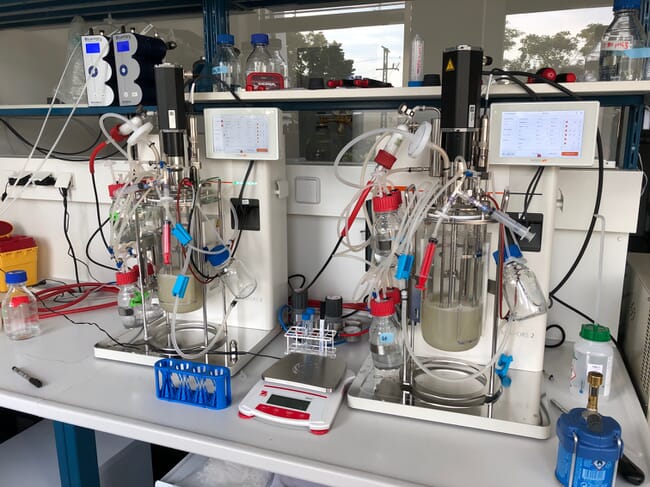
© b.fab
The end product
The resulting protein is, according to Kensy, similar to fishmeal and soy meal in terms of its amino acid profile, while it has a higher overall protein content than the other two, reaching up to 80 percent.
While it could be used for feeding a range of animals, he is targeting aquaculture due to its rapid growth and its demand for more scalable and more sustainable protein sources.
“We have a source that’s deforestation-free, that doesn’t even need arable land and can heavily support the growth of the industry,” he reflects.
And, in terms of cost, Kensy projects the protein will be eminently affordable.
“We have already calculated that we can at least reach price parity with fishmeal and this will be lower in time. Our main costs will be electricity, and the prices are generally coming down, the more renewable energy plants are installed, and in some regions they are already very low,” he explains.
He also expects that feed producers will welcome the additional volumes that his process could create.
“With fishmeal stagnating we can install new plants and increase productivity to ensure we can deliver supply,” he notes.
In terms of location, Kensy is keeping an open mind, as long as the sites have access to reliable supplies of renewables, as well as some heavy industry to provide the CO2.
Industry reaction
Kensy has only had tentative conversations with aquafeed producers so far, but says their feedback has been positive.
“They like it, but we have to deliver more volumes, meet more specifications, and conduct feeding trials – we still have some homework to fulfil their standards and specifications,” he reflects.
As part of Hatch Blue’s current Crest accelerator, Kensy has been given the chance to meet with more aquafeed producers, as well as salmon and shrimp farmers – with trips scheduled to Hawaii and Norway, followed by Singapore and Vietnam as part of the programme.
“We were happy to join Crest as a chance to really get to know the aquaculture industry better. Understand their challenges and work closely with them,” he observes.
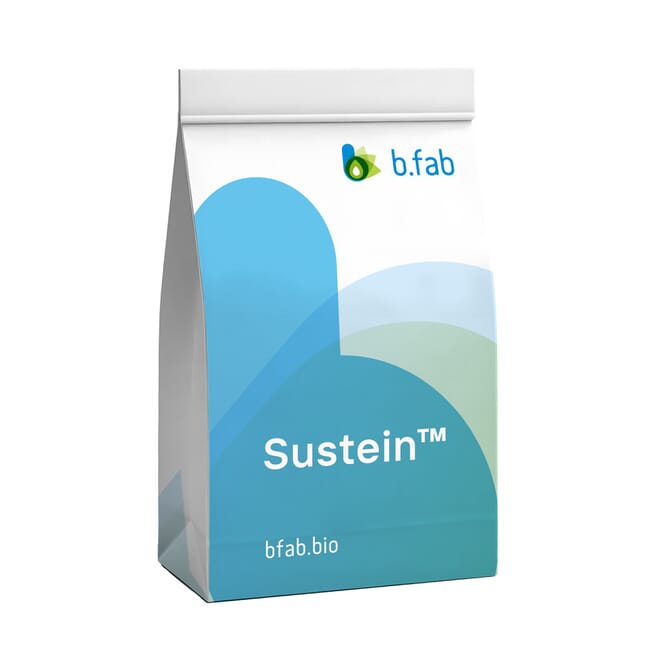
© b.fab
Milestones and challenges
Kensy first came up with b.fab’s concept in 2018, translating it into an operational company in 2021 and by the following year he had developed a demonstratable process for producing a number of individual products – protein, more specific amino acids, biopolymers, lactic acid, crotonic acid and fatty acids.
“Production of our protein is the most advanced, but it’s still at laboratory scale, now we have to step up to pilot scale – first with the protein, then with some of the other products,” he says.
Once they have produced a meaningful volume of protein, Kensy is keen to start feeding trials – the results of which he expects to be available within a year, thanks to the fast-track nature of his technology.
“The first scale up to the pilot plant should only take three months. The advantage of our technology is that we can use standard scale-up centres to produce several kilos, enough for feeding trials. We’re going to first look into the salmon market, then shrimp,” he points out.
While Kensy is complimentary about the current team members – Armin Kubis, head of synthetic biology; Florent Collas, head of process engineering; and Tim van der Linden, CFO – he is also aware that expansion will be necessary once more product is available.
“We have all the expertise to develop the process, to scale and to commericalise the process, but will need to hire people to extend our expertise into the market,” he says.
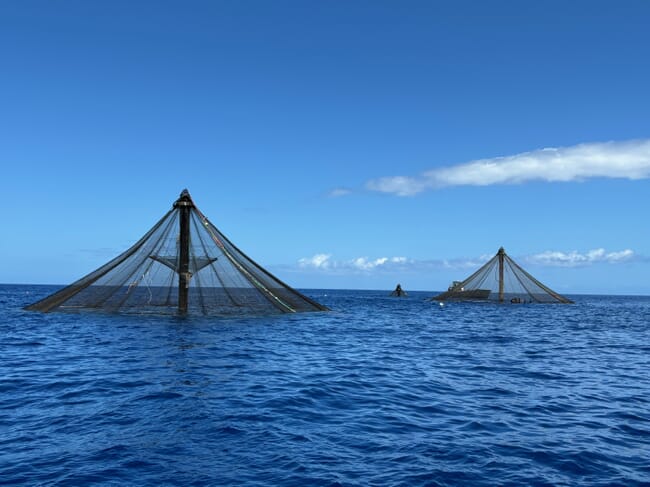
The startup is currently taking part in Hatch Blue's Crest accelerator programme
Investor ready
In order to scale up and launch on the market he is currently looking to raise several million Euros and he has a clear message to potential investors.
“Our advantage is that our competitors mainly work with gases and need specific bioreactors, but we have a liquid feedstock that can be used in standard bioreactors in existing plants. That means our scale up can be much faster. And our market launch can also be much faster. That’s our offer to investors,” Kensy points out.
As for the business model?
“Instead of building directly our own production plant, we could work with CMOs first or buy existing plants. If feed producers already have their own fermentation plants we could give them the strains and the standard operation procedures and they can produce it themselves,” says Kensy.
“We want to licence the technology to feed producers, we want to be the key license provider for the whole aquafeed sector and provide them a sustainable and long-term solution. Later on, we want to broaden our product portfolio and expand our unique biomanufacturing platform to other fields such as the food, chemical and cosmetic sector,” he concludes.
*b.fab is part of Hatch Blue's investment portfolio, but The Fish Site retains editorial independence.



